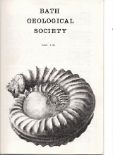St. Bees Head

Having found in the Geological Section of the Bath Public Library a small booklet entitled simply “The Lake District”, published by the Cumberland Society, I decided to undertake one of the many field trips which it described. I was most inspired by the field trip to St. Bees Head which I felt would not prove too difficult to undertake.
To quote from the booklet “the purpose of the excursion was to examine the Carboniferous/New Red Sandstone unconformity and some of the rocks above, including Brockram, Magnesian Limestone, St.Bees shale and St.Bees sandstone. Specimens of gypsum rock and semi-precious stones found as beach pebbles have been derived from glacial drift forming low cliffs near St. Bees”.
At the end of October, 1984, after driving up the motorway from Bath and an overnight stay at Holly How Youth Hostel at Coniston, the following day we continued via Torver and Broughton until joining the A595, the main road along the Cumbrian coast. Then we turned left just beyond Muncaster to have a break and visit Ravenglass again, the site of the old Roman port at the mouth of the River Esk, and we parked on the shore at the end of the road past all the houses.
The weather was cold and drizzly and while enjoying our coffee in the car we watched with great interest the arrival of various vans and land Rovers, out of which jumped numerous sturdy young men who commenced to comb the muddy beach as the tide fell carrying boxes of equipment and wearing headphones like tall extraterrestrial As Ravenglass is only a few miles from Sellafield, we deduced that they were monitoring the shore for signs of increased radioactivity from the nuclear re-processing plant. However, they soon finished and departed, leaving the seagulls in peace again to continue their search for food.
We also continued on our way, heading inland for Waswater to spend the night at Wasdale Hall, a delightful house belonging to the National Trust, and leased to the Youth Hostel Association for use as a hostel.
Built in 1829 by a wealthy Yorkshire mill-owner, it stands in its own grounds facing the Wastwater screes, and is a good centre for fell walking, but, as the hostel was due to close for the winter at the end of the week, there were very few hostellers that night.
It rained all evening, and suddenly, out of the blue as we were preparing for bed, there was one vivid flash of lightning accompanied by an ear-splitting crash of thunder which seemed to positively rock the house - and then nothing more - but in the morning we heard that the lightning had struck the Warden’s television set, putting it out of action.
The next day was still very gloomy but not actually raining, and we set off for St.Bees which we found to be a typical little grey lakeland town nestling inland on the south side of the headland being chiefly noted for its boy’s Public School and an old Priory Church.
We daily paid the Priory a visit, but this of necessity was very brief as a funeral service was shortly to be held. We were particularly interested to see a small collection of very early Christian grave stones in the south aisle, similar to the Kirkmadrine stones in a ruined chapel on the road to the Mull of Galloway in southwest Scotland.
Then we drove down to the shore where we found an immense and empty car park, and donning macs and wellingtons set off to see the cliffs. By the time we had collected some pebbles for polishing, re-traced our steps, crossed a little footbridge over a stream running into the sea and started to climb the steep cliff-edge path up to the headland, it began to rain heavily making the path muddy and very slippery, and we therefore ignominiously made a hasty retreat back to the car.
The rain showed no signs of easing off and we returned to Wasdale Hall, resolved to return to St.Bees sometime in the future when, hopefully, we might be blessed with better weather. Nevertheless we had had an enjoyable day exploring a comparatively little known part of Cumbria we had not visited before.
Brockram, we learnt later, is the north country name for a Permo-Triassic breccia.
B. Hall
“When the general observer, without a knowledge of geological science, looks around in our beautiful district upon what he might consider our everlasting hills, how impossible is it for him to realise the different conditions they have presented, though only in the yesterday of geological time. To a few of these it is my purpose to call your attention this evening”
Introduction to a lecture by Charles Moore to the Bath Field Club on 10th March 1869.
